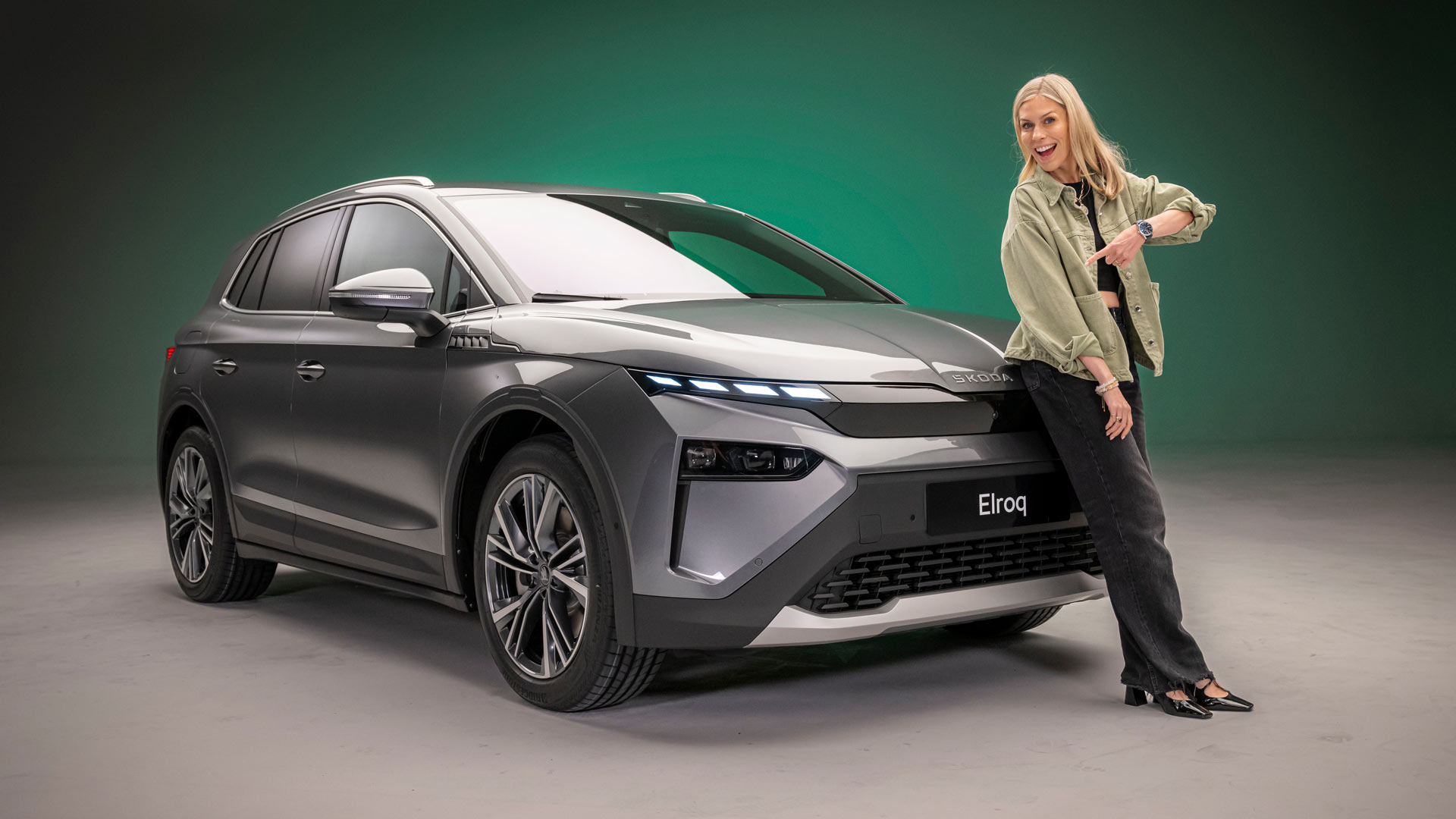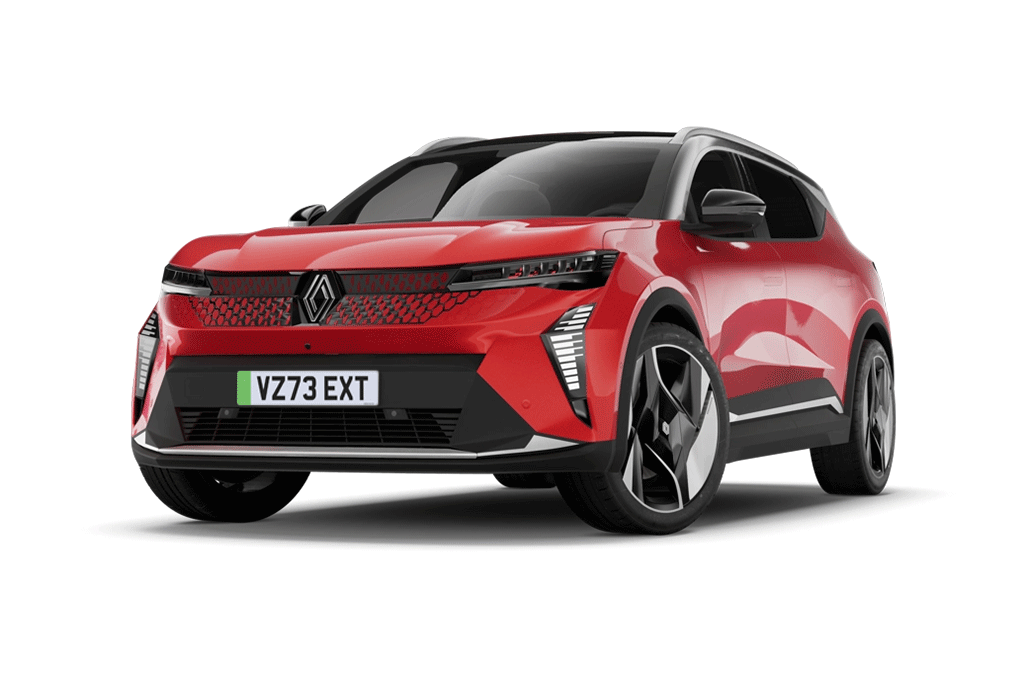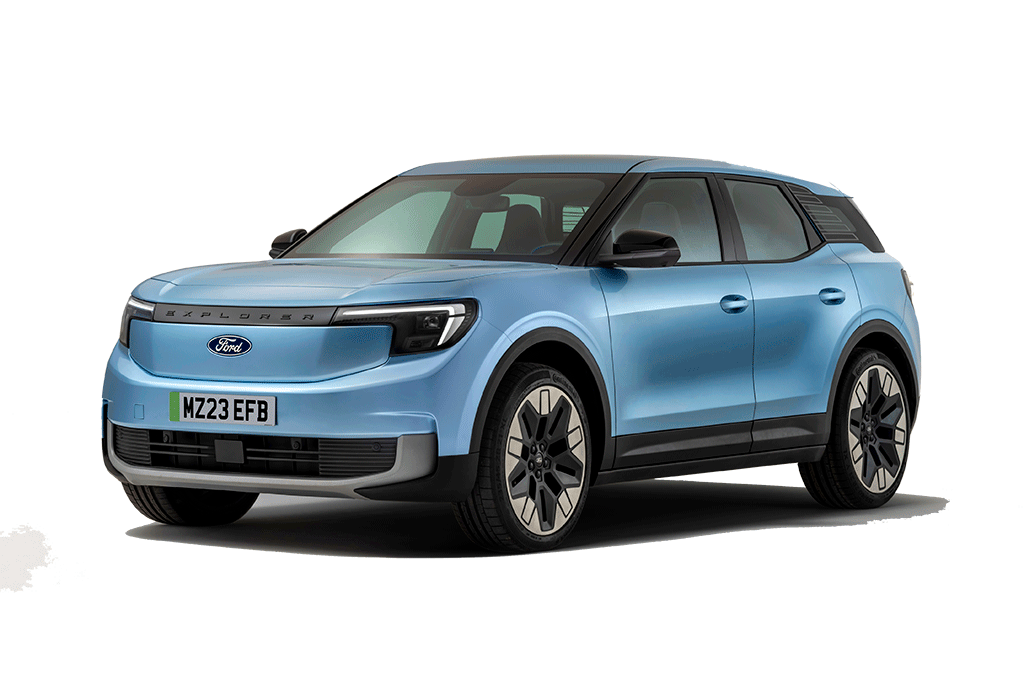Introduction
Skoda is going for electric in a big way. The first wave brought us the brilliant Enyaq three years ago, and now the Czech manufacturer is about to hit us with two follow-ups in the space of a year. This new Elroq will arrive in spring 2025, while an even more compact (and cheaper) Epiq baby SUV launching in the autumn.
Skoda has big plans for the Elroq. As the electric version of the big-selling Karoq, It’s set to compete in the biggest sector of the new car market - mid-size SUVs - and has some seriously tough competition in the form of cars like the Kia EV3, Hyundai Kona and Volvo EX30. Priced from £31,500 for the entry-level model, it costs the same as the petrol Karoq too, so looks to have everything going for it. Does the Elroq rock?
Click here to arrange a test drive at your nearest Skoda retailer.
Boot space and practicality
The Elroq might be more compact than the Enyaq, but it's still a remarkably practical package. There is not quite as much room as in its bigger brother, but only the seriously lanky are going to have an issue in front or back seats. In fact, there’s more space on offer than you would get in Skoda’s ICE-powered Karoq.
It’s the same story in the boot. It has 470 litres of space with the seats up and 1,580 litres when they are down. That beats the Ford Explorer’s 445 but is beaten by the Kia EV3’s 485 litre.There are some typical Skoda clever touches too, such as an optional storage net for a charging cable under the parcel shelf. It also has a QR code in the boot, which leads to interactive video instructions on how to use the adjustable parcel shelf or nets. There’s also an ice scraper built into the bootlid for the days when you forget to preheat the car and an umbrella in the door – just like you’d find in a Rolls Royce.
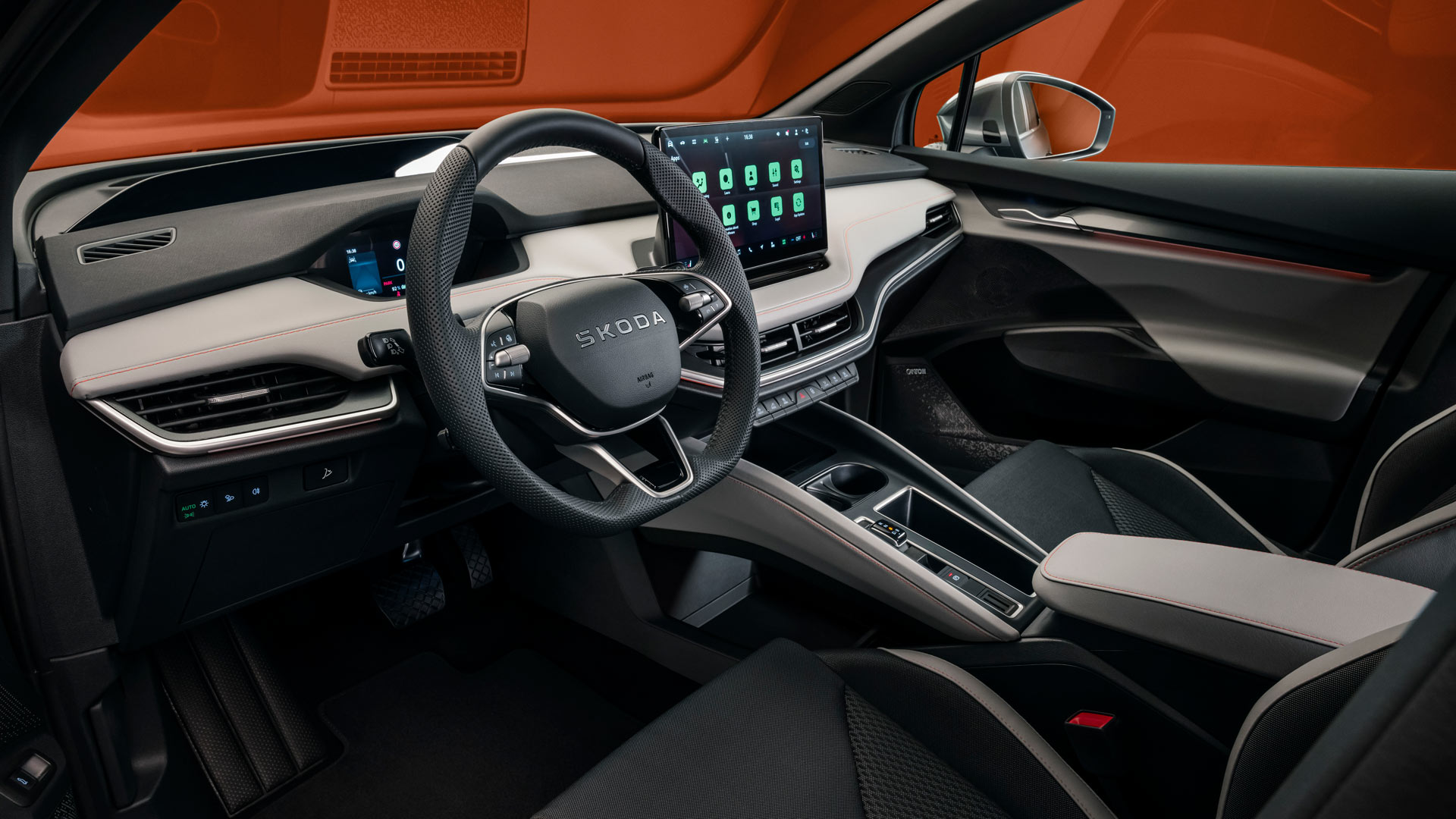
Battery, range and charging
The entry-level Elroq 50 has a net battery capacity of 52kWh, the Elroq 60 has 59kWh battery, while the Elroq 85 variants use a 77kWh pack. That 85 has an electric range of 360 miles, the 60 is 258 miles, while the entry-level 50 has an official figure of 260 miles.The Elroq 85 gets faster charging too, as it’s able to accept DC charging at up to 175kW. The Elroq 50 and 60 support charging rates of 145 kW and up to 165 kW respectively. All charge up to 11 kW at AC points.
To make sure you can top up as quickly as possible, the Elroq has a manual battery pre-conditioning function. This preheats the battery in preparation for DC charging in low temperatures, optimising charging speed. But unlike a lot of other electric cars, you don’t have to prompt the car to do it by entering the charging station in the navigation – you can just do by pressing this button, meaning you can use your phone’s navigation instead.
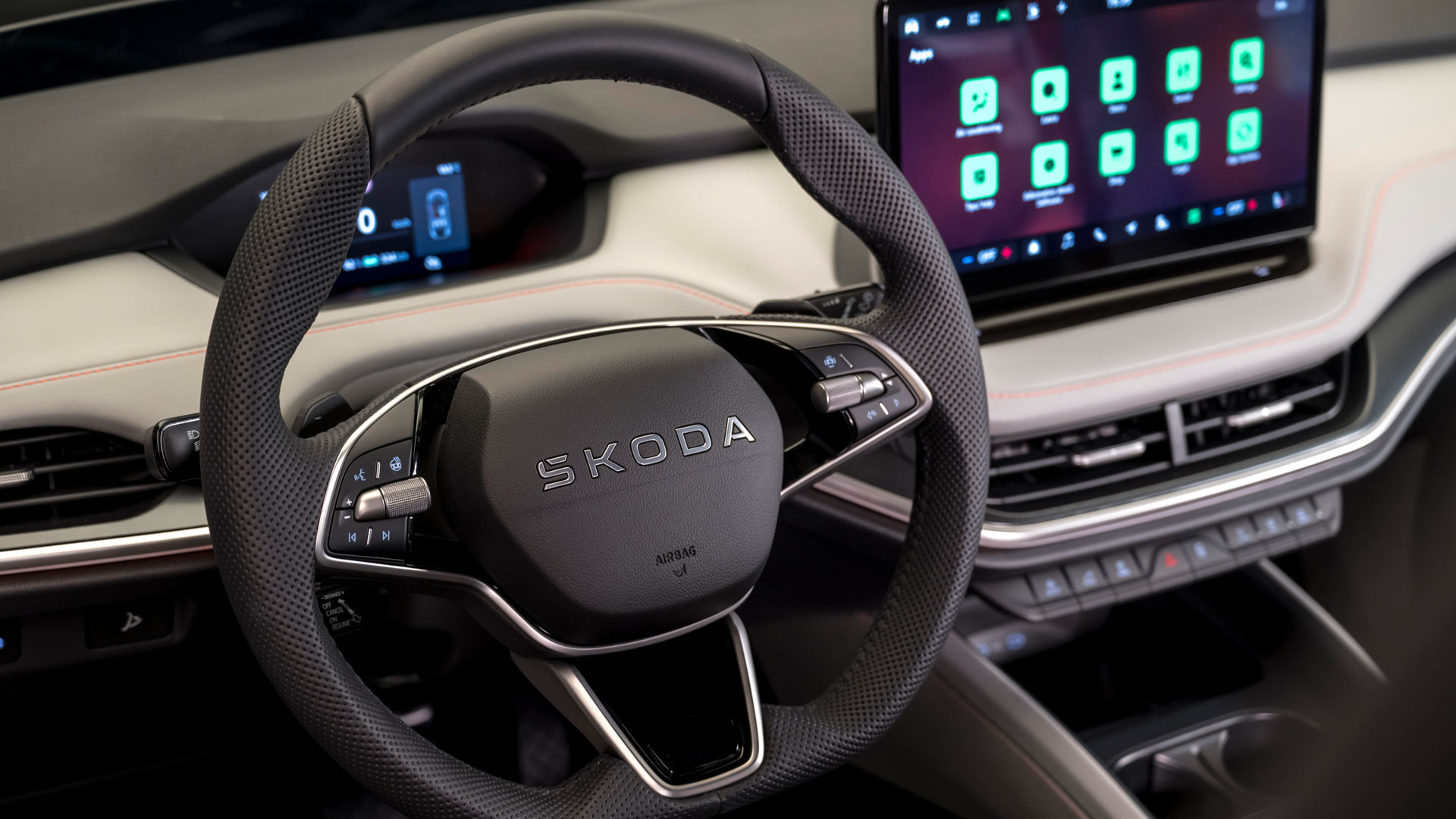
Interior and technology
Inside the Elroq gets the best of the VW bits, without the stuff we don’t like. Somehow Skoda has managed to avoid being lumbered with the hated haptics, confusing stalks and cheap switches which are used in cars such as the ID.4 and even Ford’s new Explorer. Like the Enyaq, the Elroq has four proper switches for the windows, a row of buttons for important functions and a chunky knob for gear selection.
There’s also a clear ‘Digital Cockpit’ display borrowed from from the Enyaq, which is a little on the small side for our liking but can be supplemented with an optional head-up display with Augmented Reality visualisations. In the centre of the dash is a 13-inch central display which looks after all the other functions and works well, either with or without smartphone connections.
Skoda’s app also deserves a mention as it is easy to use, and free for the first three years on all but the entry-level model. It even has an option to move your car remotely in and out of tight spaces.

Motors, performance and handling
The Elroq uses the hardware from the same box of bits as most VW Group electric cars, although there are some interesting options. The motors have power outputs from 168 to 282bhp - all with rear-wheel drive. An all-wheel drive model is expected to be added to the range later next year with a combined power output of 300bhp from two motors, probably wearing VRS badges.
We drove the current bookends of the range – the 50 and 85. The lower powered car feels perfectly adequate in most situations, only becoming a bit breathless on faster sections of motorway inclines. The 85 is a contrast as it feels too fast, with the wheels scrabbling for grip even in the dry. A crude-feeling traction control has to intervene when pulling out of junctions when you press just a little too much on the throttle.
It’s also clear the Elroq has been tuned for comfort rather than sportiness, which comes as a welcome relief for anyone worried about the state of the UK’s roads. Even on 20-inch wheels the Elroq has a cosseting ride.
The trade off is a body roll in the bends, but that’s unlikely to concern many family SUV drivers. The steering is well judged to match this, with just enough feel and weight to stop an enthusiastic driver from moaning, but not so much that it feels nervous or sporty. The surprisingly small turning circle of 9.3m is welcome too – that’s the same as Fabia supermini.
The set up does mean that you’re not encouraged to drive quickly though, despite the 85 having plenty of power.
The car we tried was also fitted with the optional DCC adaptive chassis control (£650, as part of the Driver Package for the Elroq 85 and 85 Sportline), which adjusts the suspension responses based on road surface characteristics or driver preferences. In addition to making the ride even smoother, it offers three predefined settings: Normal, Comfort, and Sport, with the Custom mode allowing fifteen different chassis set-ups. It works well, but we suspect most drivers will be happy with the standard set up and save the cash.
One slight disappointment is with the brakes. There are two regen settings operated by paddles behind the steering wheel, or a B mode. None offer particularly strong deceleration, which might not be to everyone’s taste, but more irritating is the brake pedal itself which feels spongey and needs a surprising shove to stop the car, particularly when slowing down from speed or after a downhill section.

Running costs, pricing and specs
The headline news is that the Elroq has ‘price parity’ with the petrol Karoq – meaning customers can choose whichever fuel type suits them best and not worry about the cost. The cheapest Elroq SE 50 costs £31,500 – compared to £32,995 for the Kia EV3, £32,850 for the Volvo EX30 and £39,795 for the entry-level Ford Explorer. It comes with 19-inch ‘Proteus’ alloy wheels, LED headlights and rear lights. Inside, it has the ‘Loft’ trim that comes with fabric and artificial leather upholstery, grey headlining and a two-spoke leather multifunction steering wheel.
Like all models it has a 13-inch touchscreen display and ‘digital cockpit’ instruments. Single-zone climate control is standard too.
Stump up another £1,850 and you’ll buy the SE L. The SE L 60 models come with a larger 63kWh (59kWh net) battery as standard, which has a heated multifunction steering wheel with paddles for brake recuperation, heated front seats, sat nav and the Škoda Connect app for three years.
You also get dual zone climate control, drive mode select, front parking sensors and preparation for a tow bar.
Next up is the Elroq Edition model comes, with two battery options; 60 and 85. It adds a different style of 19-inch alloy wheel, dark chrome roof rails. Rear privacy glass and acoustic side windows to improve refinement.
Edition customers also get adaptive cruise control, keyless entry, and wireless charging with cooling function. The current flagship model of the Elroq range, called SportLine, costs £37,400 and comes with two battery options 60 and 85. Both get 20-inch Asterion black alloy wheels, matrix LED headlights, unique SportLine bumpers and gloss black roof rails, door mirrors and tailgate lettering.
Inside, SportLine models come with microsuede and artificial leather upholstery, carbon effect decorative inserts, front sports seats and a black headlining.
Reflecting its more sporting nature, the SportLine also comes with progressive dynamic steering as standard, while the 85 battery also gets sports suspension. An electrically operated tailgate with kick activation and rear side airbags complete the spec list.
That all sounds good, but Skoda does like to package some nice stuff up and add it to the options list. lot of the nice stuff is on the options list and it soon adds up. For example, a heat pump costs £1,000.
Verdict
It might not be the most exciting car, but the Elroq is a great package which I can heartily recommend. It’s big enough for a family yet manoeuvrable and efficient. It’s a car which has been designed to be refined and relaxing to drive rather than shave seconds off the lap time at the Nürburgring, which is a refreshing change, especially on Britain’s broken roads. Even on the 20-inch wheels it rides remarkably well. It also looks temptingly priced compared to rivals, but watch out for the pricey options. To arrange a test drive at your nearest Skoda retailer click here.
Like the Skoda Elroq? Try these...












